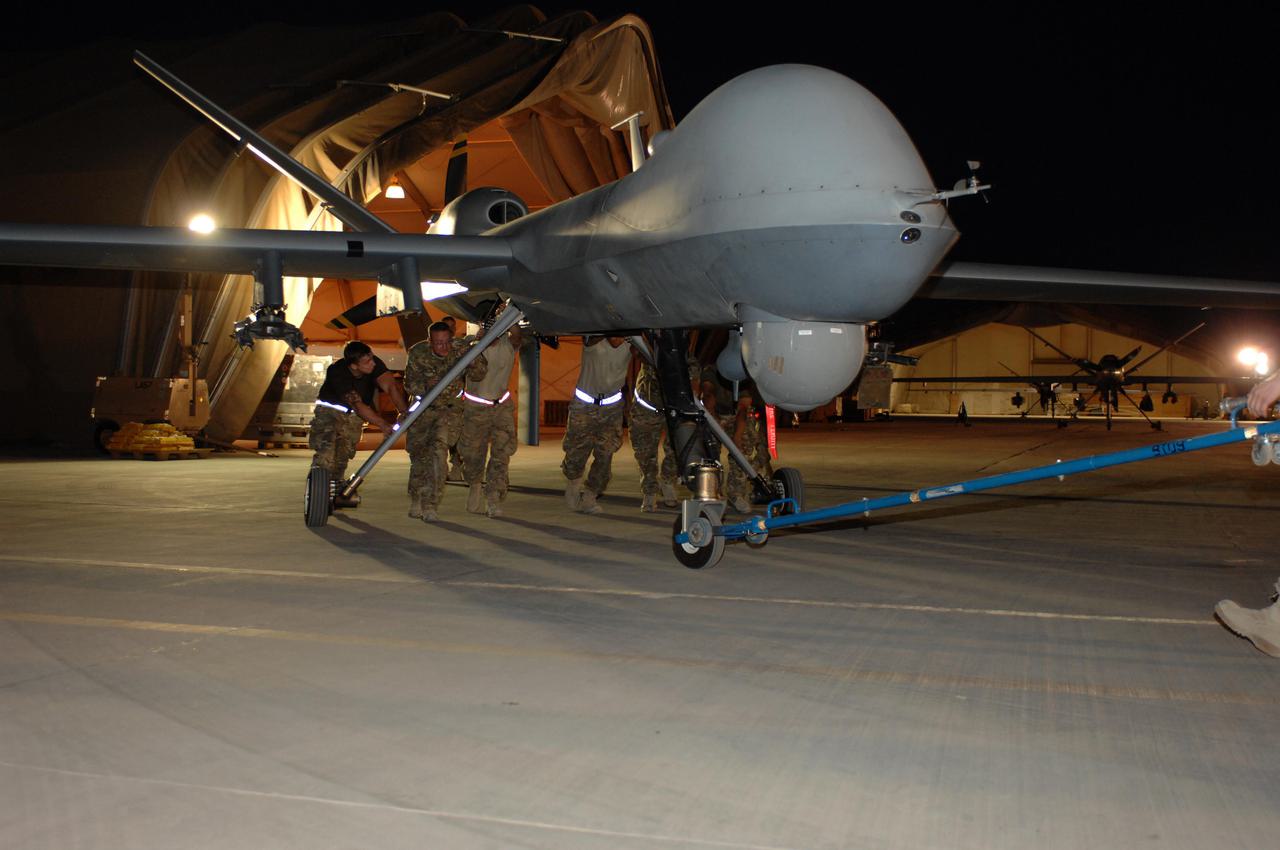
US drone war: Bureau launches new investigation into strikes in Afghanistan
A US Reaper drone at Kandahar airfield (Credit: Jack Sanders/US Air Force)
The Bureau is today launching a new strand to its award-winning drones coverage – recording US drone and air strikes in Afghanistan.
So far in 2015 the Bureau has found reports of five confirmed US attacks, which reportedly killed 35-44 people, all described as insurgents or militants.
Nato’s combat mission in the country has now ended and the Afghan army and police have taken responsibility for security in the country.
Although the alliance has moved into a non-combat mission to train and advise the Afghan security forces, there is still a “US-led counter-terrorist mission”, Freedom Sentinel, running alongside it which has seen both air and drone strikes, as well as special forces raids since its launch on January 1.
Operation Enduring Freedom, the previous US mission in Afghanistan, was larger and more high profile than Freedom Sentinel.
The Bureau has decided to start tracking air and drone strikes in Afghanistan to help ensure there is public accountability for the international missions. Our similar work in Pakistan, Somalia and Yemen has been praised for helping to achieve that goal.
Yielding information about drone strikes in Afghanistan is problematic, a reflection of the risks facing journalists working in the country, as well as poor telecommunications coverage in some remoter parts.
“The problem is that the drones are guided by less and less intelligence as the troops withdraw”
– Graeme Smith, International Crisis Group
Partly as a result, there is believed to be under-reporting of such strikes.
The Bureau is aiming to improve transparency around drone and air strikes. It will be a gradual process to uncover greater information about the use of air power in the new, counter-terrorism context.
There are already concerns about the use of air and drone strikes in such a mission.
Graeme Smith, International Crisis Group’s senior analyst in Afghanistan, said: “The problem is that the drones are guided by less and less intelligence as the troops withdraw, pulling out assets such as surveillance balloons, while the reach of the Afghan government erodes.
“We know what happens in those circumstances because most of Waziristan [in Pakistan] has suffered through similar issues for the last decade. At worst, you end up with lawless zones patrolled from the sky by machines that can’t distinguish between war councils and wedding parties.”
The Bureau has started gathering open source information on the air and drone attacks in Afghanistan to generate a strike-by-strike record. We will try to expand our range of sources as the project progresses.
Follow Jack Serle on Twitter. Sign up for monthly updates from the Bureau’s Covert War project, subscribe to our podcast, Drone News from the Bureau, and follow Drone Reads on Twitter to see what the team is reading.


